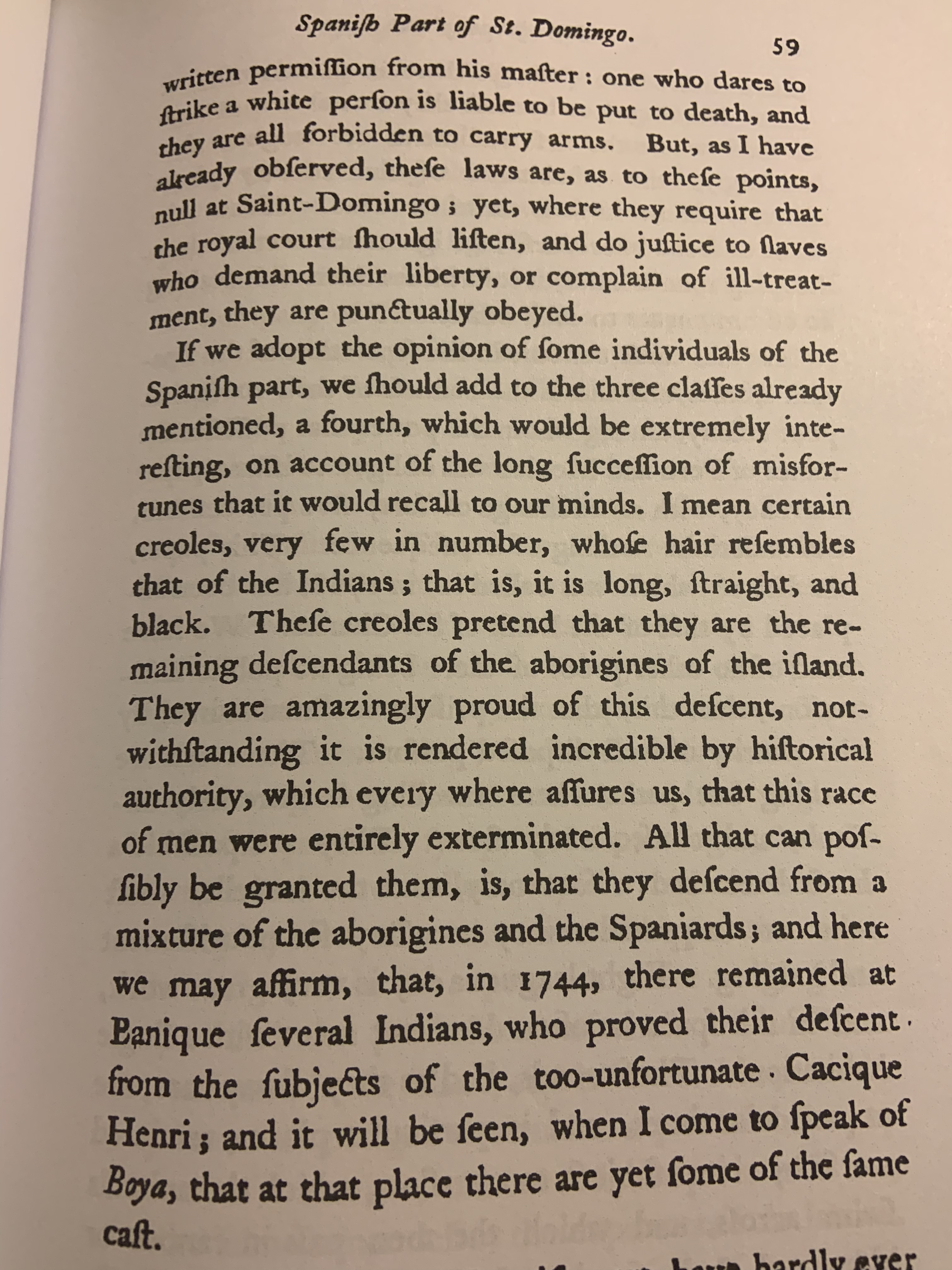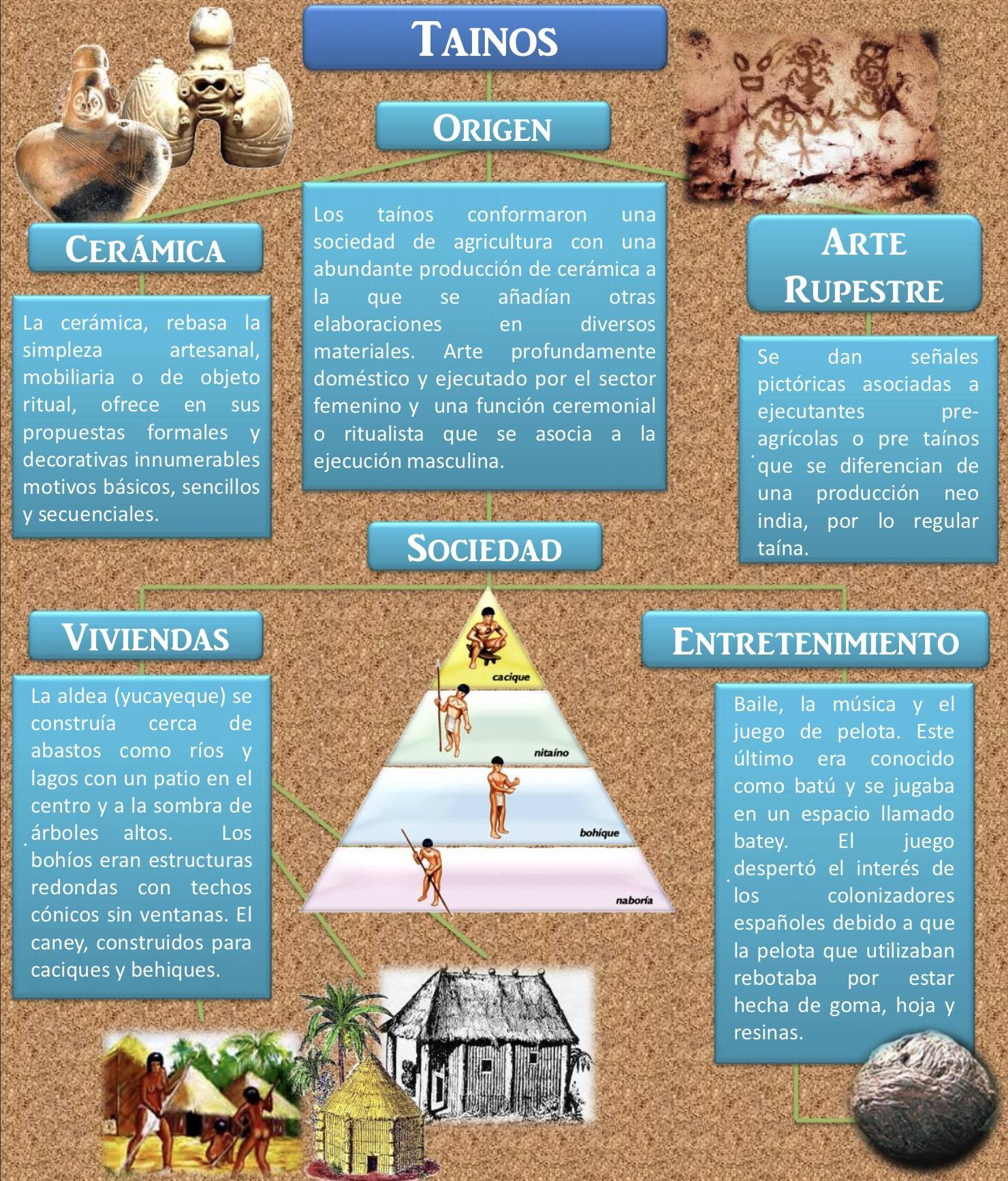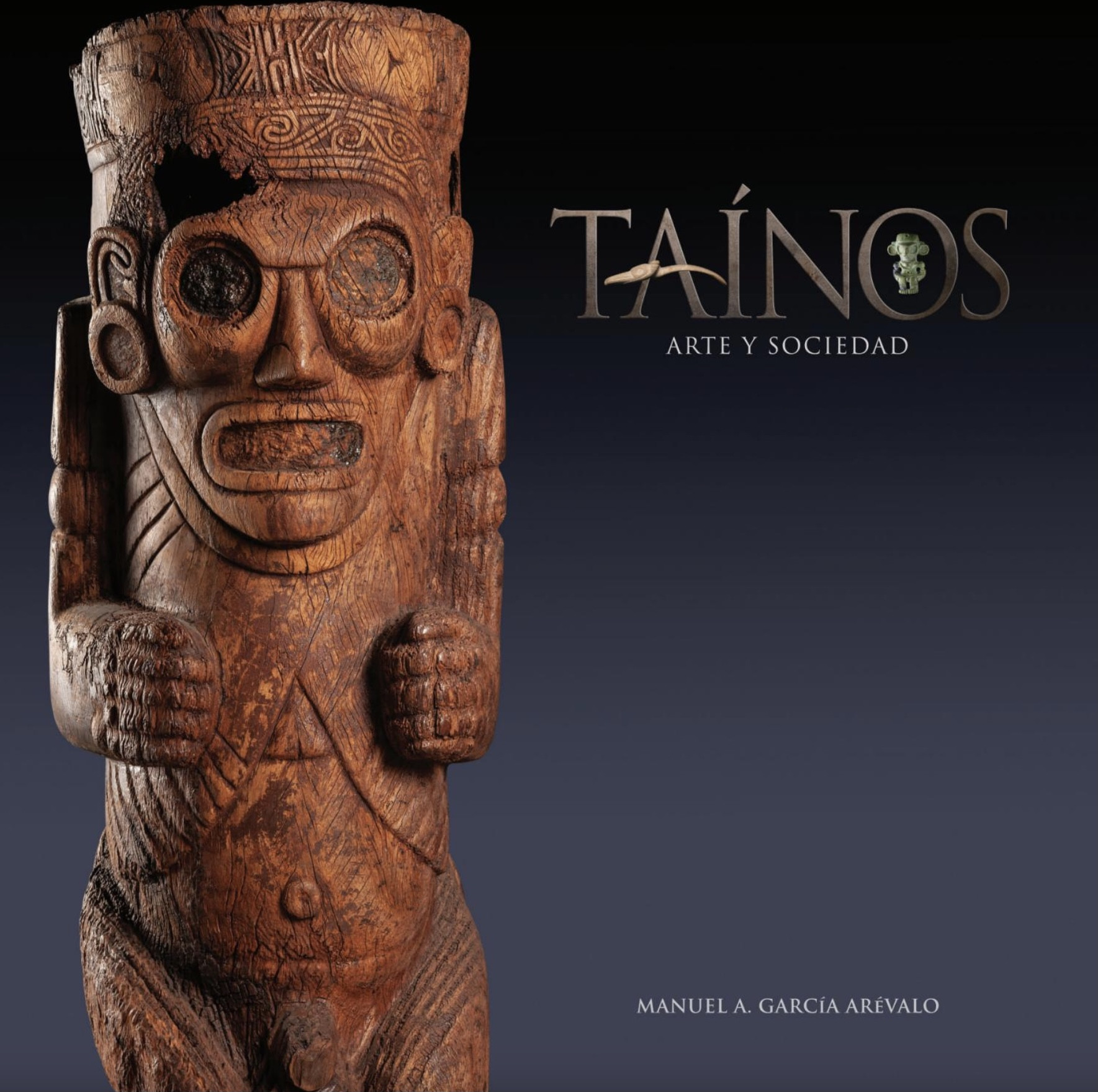This is what Moreau de St Mary says regarding a segment of the population claiming Taino ancestry. This was in the 1790's and while he was from Martinique, he lived the bulk of his life in Cap François (modern Cap Haitien) and was the owner of several plantations in the north of Haiti. He wrote two works of two volumes each, one discribing every aspect of Saint-Domingue (Haiti) and the Spanish part of Santo Domingo (DR,) though the real purpose on the Dominican volumes was to show the French government what it could gain if it was to takeover the Spanish part of the island. This part was basically virgin territory since it had a small population, most was devoid of people. Simply wilderness and mostly covered in forest that remained untouched since Christopher Columbus arrived in 1492.

What he seemed to jot be aware is that when the Spanish government made peace with Enriquillo, presumably the first official peace treaty between a European power and Native Americans, is that in the agreement was to settle his people hiding in the Bahoruco Mountains to Sabana Grande de Boyá. There is still near there a small church there from that era that the Spanish government built for them. The Spanish government aslo granted all of them the right to call themselves indians, including those that evidently were mixed. In an attempt to conserve them, Spaniards and blacks were strictly forbidden from settling in Boyá, that village was only for the indians. The irony is that there had to be many people elsewhere with some Native American ancestry too, judging by how widespread Native American ancestry is among Dominicans, which doesn't corresponds to a particular color, hair type, features. Almost every Dominican gets those Native American ancestry in DNA tests.
In essence, what the Spanish government did was something similar to what is now done in the USA with things like the "Blood Quantum," though I'm very sure those given the right to call themselves indians at least looked somewhat like the indians. There were no DNA tests back then, so appearance had to weight heavily in these matters.








